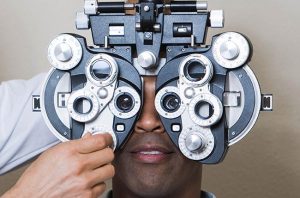In today’s fast-paced digital age, the health of our eyes often takes a backseat. With the increasing reliance on screens for education and entertainment, it’s crucial to emphasize the importance of comprehensive eye exams for all students. In this article, we delve into the significance of regular eye exams and how they contribute to maintaining optimal visual health for students of all ages.
Understanding the Importance of Eye Exams
Enhancing Academic Performance
Good vision is fundamental for effective learning. A comprehensive eye exam can detect refractive errors such as nearsightedness, farsightedness, and astigmatism. Addressing these issues promptly ensures that students can see the board clearly and read textbooks without straining their eyes. Improved vision directly translates to enhanced academic performance.
Detecting Eye Conditions Early
Eye exams go beyond just checking for vision problems. They also help in the early detection of eye diseases like glaucoma, cataracts, and macular degeneration. When these conditions are identified in their initial stages, appropriate treatment can be administered to prevent further deterioration and potential vision loss.
The Frequency of Eye Exams
The recommended frequency of comprehensive eye exams for students can vary depending on age and risk factors. Here’s a general guideline:
- Infants and Toddlers: The first eye exam should be conducted at 6 months of age. Follow-up exams are recommended at age 3 and before starting school.
- School-Age Children: Students between the ages of 6 and 18 should have an eye exam every two years, or as recommended by an optometrist or ophthalmologist.
- College Students: Those in higher education should continue with biennial eye exams, unless they have specific eye health concerns or a family history of eye diseases.
Benefits of Regular Eye Exams
Preventing Digital Eye Strain
With the proliferation of digital devices, students are exposed to screens for prolonged periods. This can lead to digital eye strain, characterized by symptoms like eye fatigue, headaches, and dry eyes. Regular eye exams can detect these issues early and guide students on proper eye care and ergonomic practices to reduce strain.
Ensuring Proper Eye Coordination
Eye exams assess not only visual acuity but also eye coordination. Poor eye coordination can affect a student’s ability to read and comprehend text. Optometrists can recommend therapies to improve eye teaming skills, which are essential for smooth and effortless reading.
Prescription Updates
As students grow, their eyes change. Regular eye exams ensure that their eyeglass or contact lens prescriptions are up to date. This helps in maintaining clear vision and preventing eye strain.
How to Prepare for an Eye Exam
When scheduling a comprehensive eye exam for a student, it’s essential to be prepared. Here’s a checklist:
- Medical History: Provide a comprehensive medical history, including any family history of eye conditions.
- Current Eyewear: Bring along any glasses or contact lenses currently in use.
- List of Medications: If the student is taking any medications, make sure to inform the eye care professional.
- Questions and Concerns: Prepare any questions or concerns you may have about the student’s eye health.
Conclusion
Comprehensive eye exams are not just a luxury; they are a necessity for students of all ages. By prioritizing regular eye check-ups, we can ensure that students have the visual acuity and eye health needed to excel academically and lead fulfilling lives. Don’t wait until vision problems arise – schedule an eye exam today and invest in the future of our students’ visual well-being.
Enhance Your Sports Performance with Quality Eyewear



